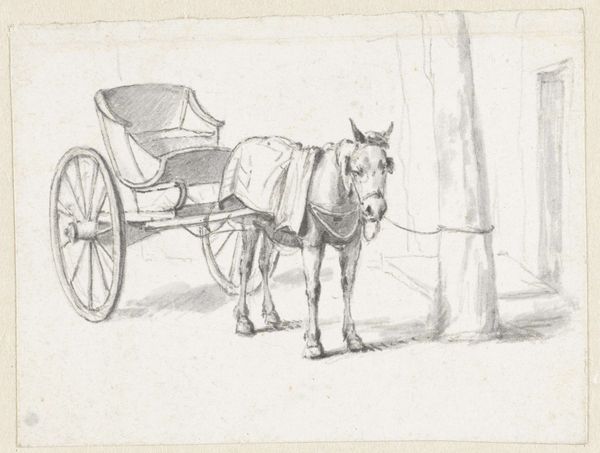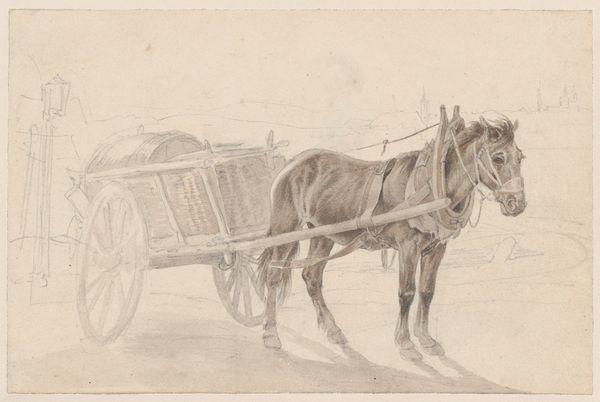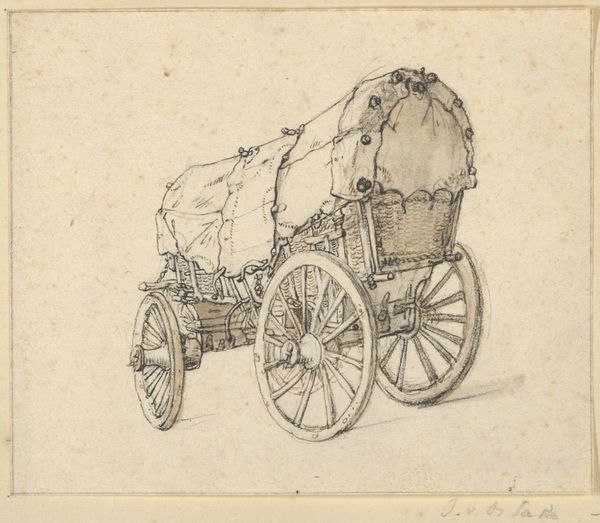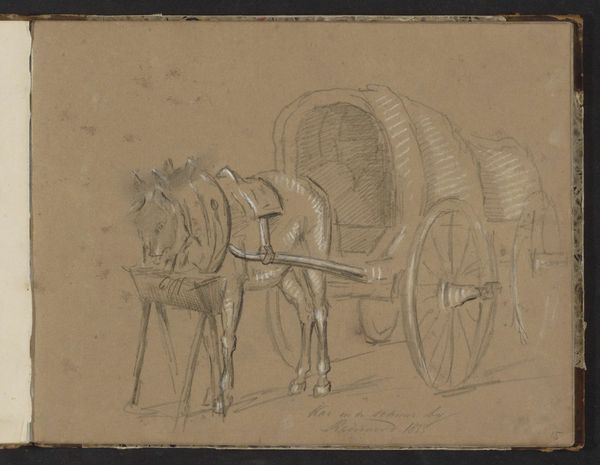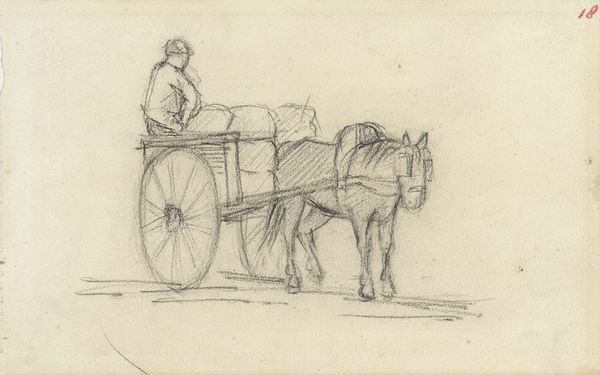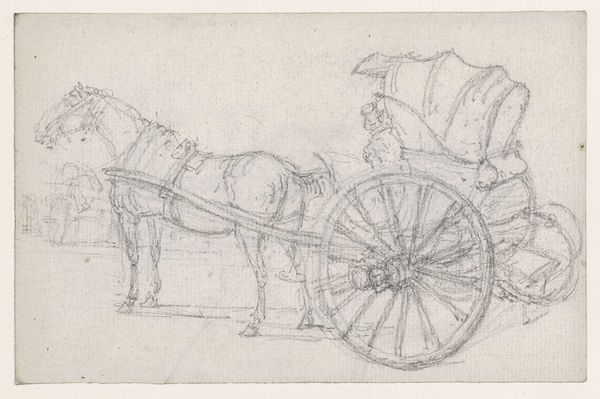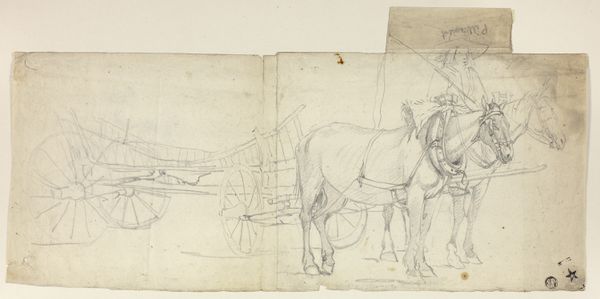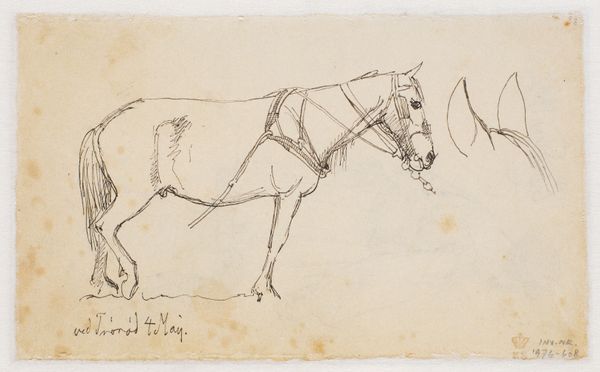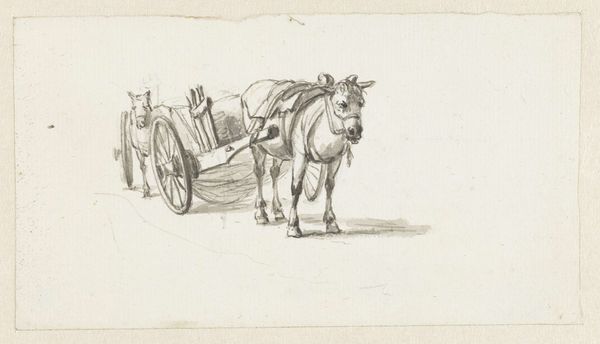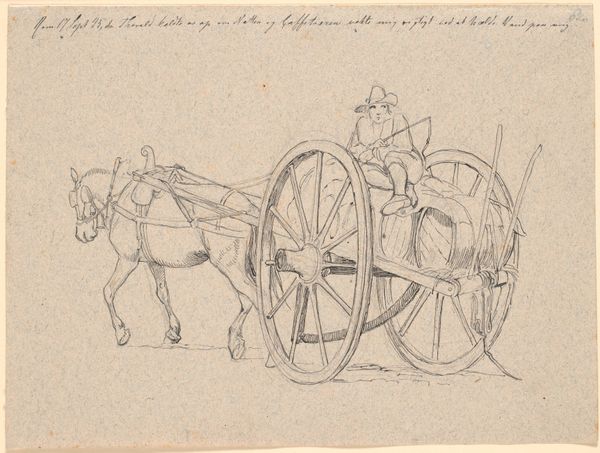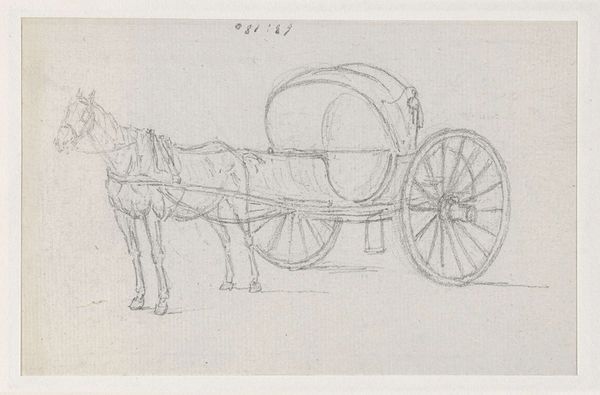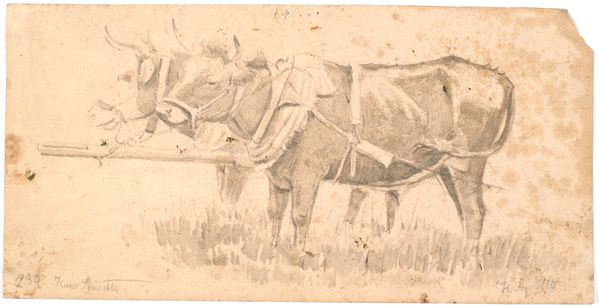
drawing, pencil
#
drawing
#
landscape
#
figuration
#
pencil
#
realism
Copyright: Public Domain: Artvee
Curator: Here we have Winslow Homer's "Horses and Wagon," a pencil drawing from 1868. What strikes you about it at first glance? Editor: The immediate sense is one of transience and labor. It's not idealized at all, capturing something raw and functional about work in rural life. Curator: Absolutely. Considering the materials and process, Homer uses these quick, almost gestural pencil strokes. It gives it a sense of immediacy, almost as though it were sketched on the spot. The lack of pretension elevates the mundane. Editor: Precisely, this challenges any romantic notions of labor. Who is benefiting from these horses and wagon? Where are they going, and what goods are they transporting? These details are critical for understanding the distribution of resources and the socio-economic dynamics that underpin such a scene. Curator: Indeed. And look at how the harnessing is depicted; the leather and metal components, likely mass-produced at the time. They serve as potent symbols of changing industrial practices and their encroachment on agricultural landscapes. The labor, here, isn't only about physical effort but involves engaging with the products of industry. Editor: Exactly. We can consider its reflection in contemporaneous literature focusing on the plight and endurance of the working class—a class inextricably tied to land ownership, systemic oppression, and the pursuit of resources. Are we seeing a documentation of American pastoral life, or a depiction of class relations and societal disparities? Curator: It’s probably both. The very act of documenting this scene and displaying the work becomes intertwined with the complex fabric of class, identity, and politics. How does this particular pencil drawing contribute to wider discourses surrounding representation, authenticity, and truth? Editor: In this small sketch, Homer invites us to engage with big questions about social justice. It asks, who are we representing when we capture rural life? Whose stories get centered and celebrated and, by extension, who is made invisible? Curator: A valuable observation! Examining its materials reveals deeper considerations about how these stories and realities were created and circulated. Editor: This small drawing serves as an important artifact capable of inspiring many meaningful dialogues.
Comments
No comments
Be the first to comment and join the conversation on the ultimate creative platform.
